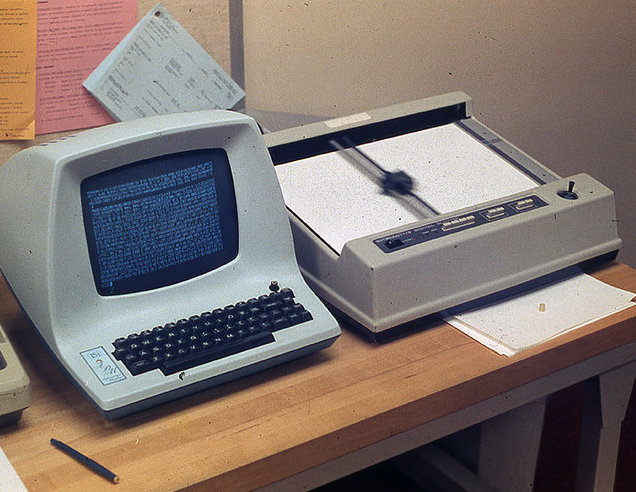
Artist Michael Galbreth tells a story of an artwork. When he was an MFA student in the early '80s, he collaborated semi-officially with a computer science teacher to create a drawing visualizing the random number generator in the department's PC. If a million random dots were printed on a plotter would the field of dots be uniform or would some stucture be revealed? How random is random, in other words?
Galbreth and the teacher estimated the printout on the Technology Department's plotter (above) would take several days. After only a few hours, and 28,440 points printed, the plotter broke:
The strain placed on the arm of the plotter was just too much. It over heated, or something, and one of the small cables that drove the stylus snapped. Scott was gracious and forgiving about the whole thing, smiling as he explained what had happened. But I could tell he wasn’t happy. Losing a plotter was a real loss. One fewer plotters in the class created a log jam for the other students who needed to make drawings for their assignments. And because the significant devotion of time and energy to this plotter had no relation, relevance, or use to the goals of the Technology Department, it was irritating. There would be no continuation of this experiment.
Galbreth explains his private reaction to the catastophe:
I felt bad and responsible for the broken plotter. But at the same time, I was secretly delighted. I thought that the entire affair was fascinating. My time in the Technology Department using the computers, doing seemingly useless art experiments, felt like an invasion, as if I were in a place I wasn’t properly supposed to be and doing things that I wasn’t properly supposed to do. Whatever I was able to accomplish seemed like a coup. Yes, the experiment to graphically portray a random number formula failed, but I considered the attempt at the endeavor a success. In the end, there was a result. Something did happen. A drawing was made. Built into that drawing was the intent, the idea. That idea was to experiment with and challenge a system, or perhaps, rather, to reveal it.
